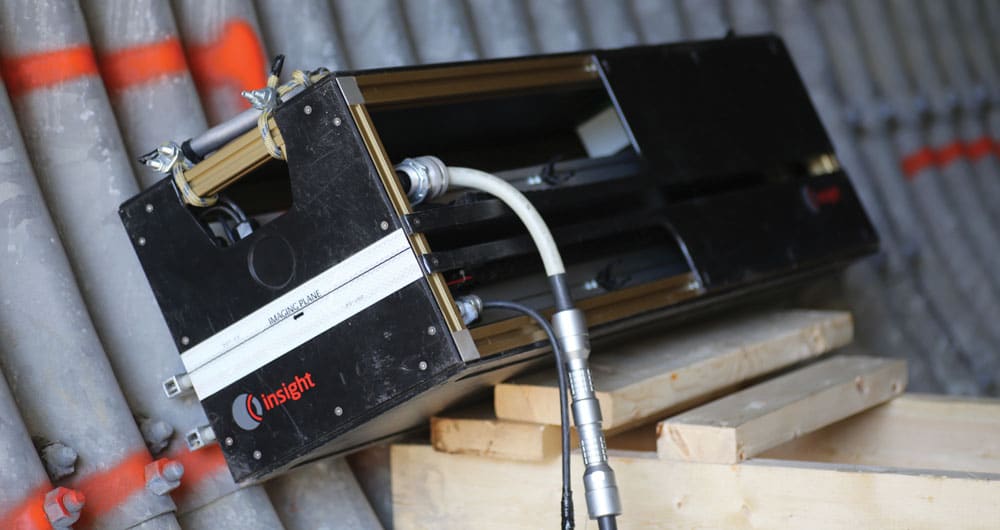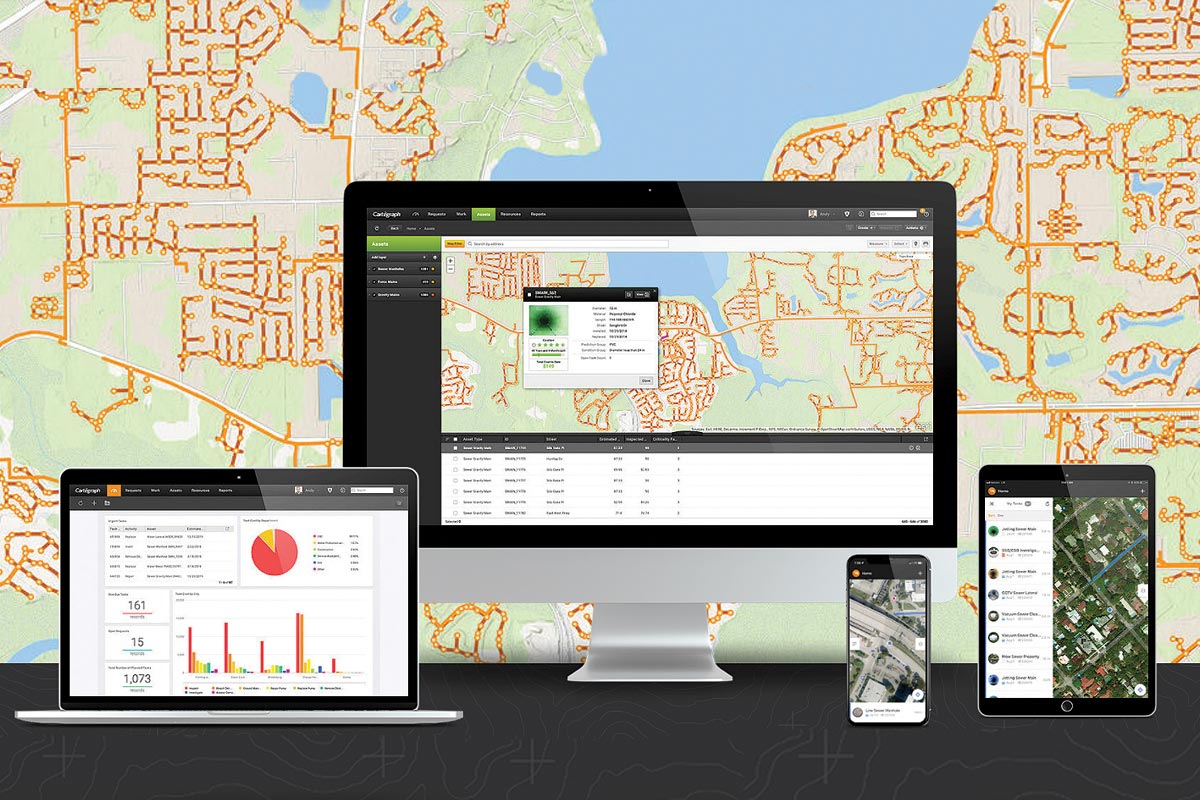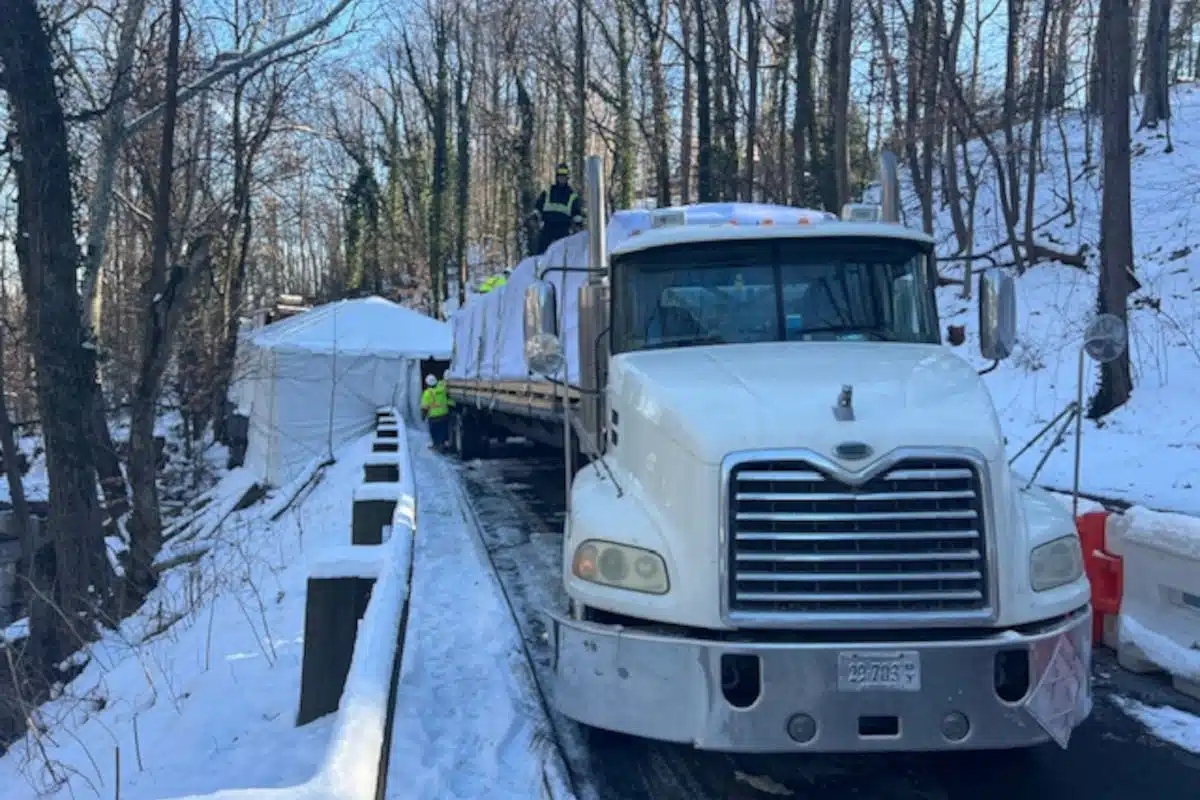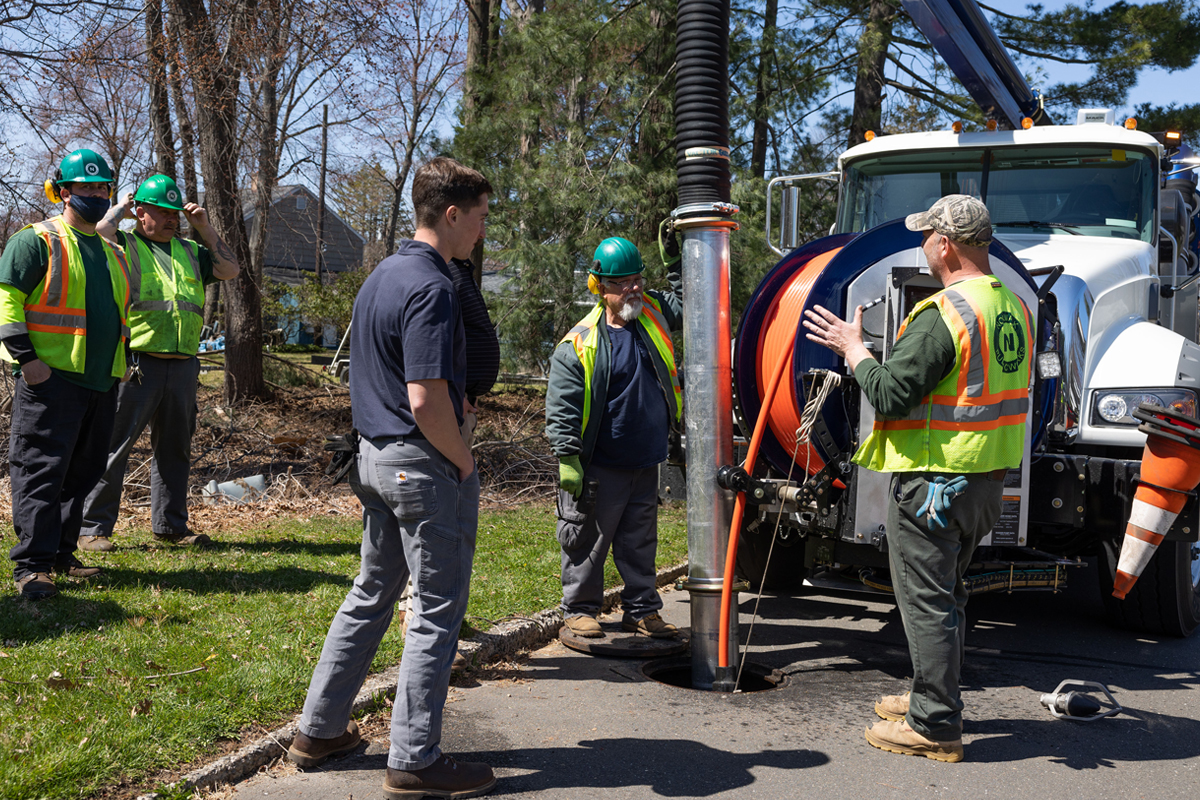
Assessing Critical Infrastructure – Inversa Systems Blossoms from Graduate Studies Office
Do a quick search of the Internet for successful products invented for one thing that ended up being used for another, and one of the top posts is from Mental Floss. It is an interesting list of 11 products many people know and use today ¹. Make that list 12, and add Insight, the diagnostic imaging tool developed and patented by New Brunswick-based Inversa Systems.
The technology that was to become the Insight system, was originally researched for the medical field. As John Bowles, MScE, P.Eng, president and CEO of Inversa Systems tells it, the company can trace its roots to the late 1990s and the graduate studies offices at the University of New Brunswick. There, Bowles was working on his master’s in engineering with a focus on non-destructive testing (NDT) and sharing office space with a PhD research student who was looking at the feasibility of reducing radiation in computed tomography (CT) scans.
“The university had research ongoing that looked at low-dose CT scan patients in hospital settings who needed to get CT scans regularly – like cancer patients. They would end up getting secondary cancers due to the radiation from the CT scans,” Bowles says. “The PhD work was looking at new ways to reduce that radiation and it came down to complicated physics and quantum mechanics.”
What they found was a unique way of taking a CT scan using back-scatter computed tomography (BCT) that theoretically allowed for taking a CT scan from one side rather than the necessary 360-degrees needed for a CT machine. While the research did not look favourable for medical purposes, Bowles and his office mate knew that something could be done with the technology.

From the Lab to the Street
In the early 2000s, the two partnered to create a company to commercialize the intellectual property, an idea that is more common today than it was two decades ago.
“It was a struggle to take a 400-page PhD thesis – take this extremely complicated hardware and software, make it practical to take out of a textbook and turn it into a real thing. We managed to raise capital from a variety of sources and make the first BCT unit,” Bowles says. “Over the ensuing years, we were able to take this BCT and find out what it was useful for. I laugh now in hindsight. It was a backward way of starting a company in that we didn’t have a problem. We were actually looking for one.”
In the ensuing years, the technology has been used on everything from bridges and offshore oil rigs to F-18 fighter jets for the Canadian military and levee structures for the U.S. Army Corps of Engineers. But where Inversa Systems has seen the most growth and use of its BCT technology is in the inspection of corrugated metal pipe (CMP) drainage structures.
The tide began to turn that way in 2007 when Bowles was having a conversation with a bridge engineer who worked for a local department of transportation (DOT). The engineer acknowledged that the biggest problem facing the province was the CMP culverts under the highways in New Brunswick.
Bowles notes that many of these large culverts that cross under the highways and roads across Canada – and North America as a whole – were installed more than 50 years ago and were designed with a 50-year design life. Many of these culverts fall under the auspices of the DOTs and are more numerous than the bridges, which are also in their jurisdiction. Yet, when it comes to accurate condition assessment data, the DOTs have far more accurate and available data for the bridges.
“He was giving me the insight of where the future of the company was going to go. His challenge to me was coming up with a methodology for screening large volumes of these CMP structures with actual data that is not just visual based,” Bowles says. “And he asked if we could look behind the pipe wall to look for soil voiding.”

Many of North America’s CMP culverts fall under the jurisdiction of departments of transportation. Many of these departments have sophisticated systems to assess, rate and track the condition of the roads and bridges. On the flip side, these departments do not have similar systems in place for the culverts running beneath these heavily-travelled roads.
Finding Its Niche
Corrugated metal pipe is a flexible conduit, and, because of that, it needs the strength of the supporting soil behind it. Bowles likens it to a raw egg. If you squeeze an egg uniformly, it is strong, but if you took two fingers and squeezed the opposing walls, the egg will buckle and fail.
“CMP has a well-known failure mode, but it’s impossible to visually see what’s going on behind that pipe wall,” Bowles says. “That engineer gave us that idea, and I guess, in a way, the rest is history. It set a path where we not only developed the tools – both hardware and software – to make the portable CT practical for underground pipe inspection, but we also developed all the front-end software. The data can stream from the field to the office, produce auto-generated screening reports, stamp it, sign it off and provide CT scan data of areas where the pipe is at risk.”
Since – and as a result of that 2007 conversation – Inversa Systems has worked closely with the New Brunswick Department of Transportation and Infrastructure, which helped Bowles and his team develop the technology.
Since that first conversation, Inversa Systems went from being an inspection only company to being true asset managers offering a three-phased program for its clients. Phase I incorporates visual and inSight Lite condition assessment. Phase II involves a full BCT diagnostic scan of the asset, and Phase III is the rehabilitation and asset management recommendations.
“Everybody thinks of us as a hardware company, but really we are a data company. We have hardware to facilitate the data collection,” Bowles says. “To properly provide asset management services, you have to have high quality data. No matter what you do if it’s garbage [data] in, then it equals garbage [data] out.”
All the Inversa Systems equipment from the inSight Lite handheld scanner to the asset management software and customer access portals are designed and built by Inversa Systems. While the system can be used on other drainage assets, Bowles says that CMP is by far its largest base.
“Our belief is that this particular class of assets has largely been ignored. There is a lot of cost savings for clients who are undertaking these asset management contracts with us. A lot of the time they are replacing things that are structurally sound and don’t need to be replaced. They look bad, but with a true analysis based on real data, the asset turns out not to be bad,” Bowles says. “We also have clients who have been able to avoid fairly major catastrophes because the pipe looks good, but it turns out to have a huge cavern behind it. What I can say definitively, is that looking at CMP visually it is about 50-50 whether you are right or wrong. It is extremely misleading what is going on behind that pipe wall especially with corrugated metal.”
An analogy that Bowles uses is that of going to a doctor for chest pains, it is impossible for the doctor to just look at you and tell you what is wrong. If they did diagnostics like that, the doctor would get laughed at. Judging the status of drainage assets should be thought of in the same way. The owner needs to gather all the appropriate data and then make asset decisions based on all the data rather than visual or theoretical data alone.

The first step in an Inversa Systems culvert assessment is a scan with its proprietary handheld inSight Lite system. The Phase I portion of the assessment includes handheld scanning and visual inspection.
Growth in North America
That mentality to offering a total asset management has paid off. The company’s systems have been used across the globe at the municipal, provincial, state and federal levels, as well as for private industry. About three years ago, Inversa made a push to expand into the United States, setting up a U.S-based company headquartered just outside of Atlanta, Georgia. Today, 80 per cent of its work is in asset management and 80 per cent of that is in the United States.
To what does Bowles attribute that growth in three years? He says it is twofold. The first is that when the decision was made to work in the United States, it pushed a lot of resources to making it work. The second is the sheer amount of infrastructure that is failing or near failing.
In the last year alone, Inversa Systems has inspected more than 850 assets for the Georgia Department of Transportation. The company was able to generate a significant amount of return on investment for the department by changing the way it handles its management strategy for those assets.

“DOTs are familiar with asset management. They already have systems in place to rate the pavement. There is a well-known deterioration curve for pavement, with effective management steps for each stage of deterioration,” Bowles says. “DOTs are realizing they need to adopt the same philosophy to drainage structures. We are experiencing it, and we are on the leading edge. It’s early for it to be a widespread approach, but it is absolutely coming.”

Looking Ahead
In terms of more work in the trenchless sector, the future is in the ability to roboticize its technologies. The ability to mount its sensors on a crawler will allow Inversa to scan smaller diameter pipelines. The current methodology is all handheld and used in pipes where man-entry is possible. A growing, and interesting area where the technology is being used, is post-construction QA/QC, with a focus on slipline projects.
“We were involved with a report for the U.S. Army Corps of Engineers that focused on grout injection practices,” Bowles says. “We used our handheld tool, went in and mapped out all of the locations that they [the contractor] didn’t manage to fill with grout. We’ve found contractors cheating where they capped off the bulkheads and they haven’t actually injected the annular space.”
“With the sliplines, you can see the HDPE wall, the void in the annular space, see the corrugated metal pipe and then the void behind that. The contractor sliplined the pipe and left all the support behind it empty. The client spent a lot of money to rehab this pipe and the soil around it will still collapse. It’s just a matter of when.”
If there is one thing that Bowles, and his entire team at Inversa Systems is passionate about, it’s that underground asset owners across North America begin basing their decisions – on what they do with those assets – on real data not on a visual inspection alone.
“There is not a great correlation between visual data and what is actually going on structurally behind those assets,” he says. “Don’t get fooled by thinking you’re doing asset management with improper data. It’s great to have an asset management plan but if the data in the plan is inaccurate or insufficient, your results will not be any better.”
1 – For those who would like to read the Mental Floss list – and there are some interesting ones on there – visit mentalfloss.com/article/57861/11-successful-products-originally-invented-something-else.
Mike Kezdi is managing editor of Trenchless Technology Canada.




